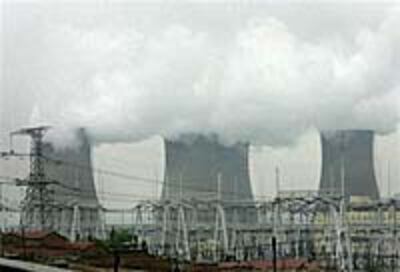
A new study identifies China’s electric-power industry as the country’s biggest polluter because of high emissions of sulfur dioxide, greenhouse gases, and smog from the burning of coal.
The report, titled “China’s Power Sector Reforms: Where to Next?,” was issued in July by the Paris-based International Energy Agency (IEA).
The study cited estimates that coal will continue to account for 59 to 70 percent of China’s electric-power generation in 2020.
This suggests that in the absence of major policy changes, the generation of electricity could be the country’s biggest source of air pollution for years to come.
In interviews with Radio Free Asia, study contributors and coordinators said that China has failed to enforce rules restricting power plant pollution.
Jonathan Sinton, China program manager in the IEA Secretariat’s Office of Non-Member Countries, said China’s power plants have been required for years to install equipment for treating harmful gases.
Part of the reason is the intense pressure to generate as much power as possible,
But many plants have either not installed the equipment or are not using it.
“Part of the reason is the intense pressure to generate as much power as possible,” Sinton said.
“It takes a lot of electricity to run pollution control equipment. If you’re not running your pollution control equipment, whether it’s installed or not, then you have power that you can sell, relieving shortages.”
Coal-fired plants are cheaper
Older coal-fired plants, which tend to pollute more, are also seen as cheaper to use because the investments to build them have already been paid off, making the purchase of coal their only major cost, Sinton added.
Philip Andrews-Speed, a China energy expert at Scotland’s University of Dundee and a major contributor to the IEA report, said power projects have also been launched without central government approval or environmental review.
Andrews-Speed said that China could realize gains in pollution control almost immediately by ensuring that power plants with desulfurization units keep them turned on.
“You could have presumably, and in principle, an instantaneous effect by insisting and enforcing that all plants with the appropriate equipment use it. And then trying to retrofit other plants—that’s expensive—but certainly making sure that all new plants have the necessary equipment.”
Pollution from China’s power sector has also been tied to the country’s runaway economic growth.
Despite warnings against excessive investment and economic overheating, China’s gross domestic product surged ahead at 11.3 percent in the second quarter of this year.
Jonathan Sinton noted that it may be hard to control power plant pollution as long as growth in GDP is unrestrained.
“So long as growth continues at very high rates, and so long as simple increase in GDP remains the greatest good that local administrations are shooting for, you’re going to continue to have strong pressure for provision of power to feed that growth at all costs.”
“It’s really up to China to determine for itself how much of these costs it can continue to bear,” Sinton said.
Original reporting by Michael Lelyveld. Edited for the Web by Richard Finney.
